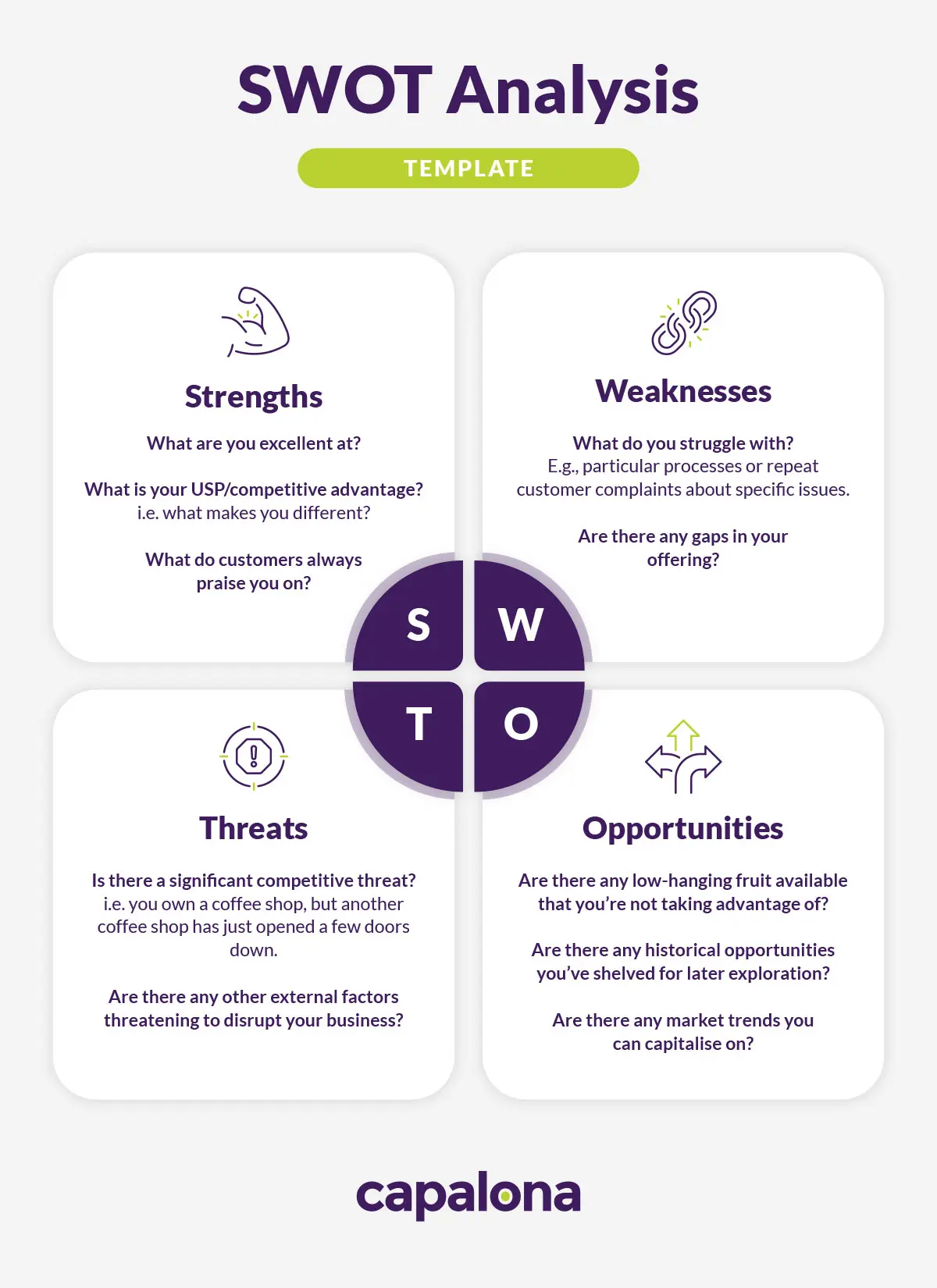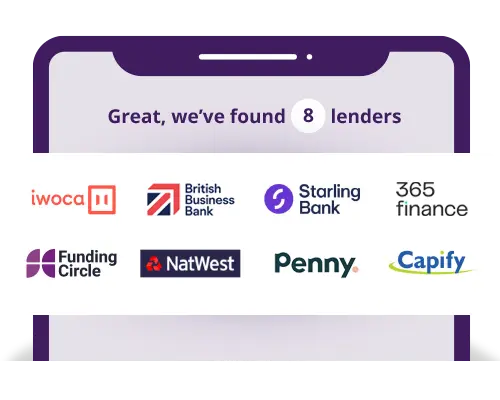You might have heard the term ‘SWOT’ analysis and quickly discounted it as marketing jargon, but a SWOT analysis can provide you with information to help you build and grow your business empire.
Standing for Strengths, Weaknesses, Opportunities and Threats, a SWOT analysis can help you refine and define your business offering to cater perfectly to your audiences’ needs while being in tune with the outside world and its effect on your business.
Is a SWOT analysis for new or established businesses?
A SWOT analysis is a useful analytical marketing tool to help any business at any stage understand the market they’re competing in, helping them plan for success and dodge or prepare for any barriers that might stand in their way.
It’s not just a one-time exercise either; a SWOT analysis should be a cyclical process because the market shifts all the time, and you need to put yourself in the best position to compete with others confidently, and that means staying ahead of the curve.

An example of a business SWOT analysis
If you’ve not completed a SWOT analysis for your business plan before, where do you start? Here’s an example of a coffee shop or café business:
| Strengths | Weaknesses |
|---|---|
|
|
| Opportunities | Threats |
|
|
Questions to ask yourself for each section
Strengths:
- What are we excellent at?
- What is our USP/competitive advantage — what makes us different?
- What do customers always praise us on?
Weaknesses:
- What do we struggle with? E.g., particular processes or repeat customer complaints about specific issues.
- Are there any gaps in our offering?
Opportunities:
- Is there any low-hanging fruit available that we're not taking advantage of?
- Are there any historical opportunities we've shelved for later exploration?
- Are there any market trends we can capitalise on?
Threats:
- Is there a significant competitive threat? i.e. you own a coffee shop, but another coffee shop has just opened a few doors down.
- Are there any other external factors threatening to disrupt your business?
Best practices when conducting a SWOT analysis
Remember, this shouldn't just be based on your opinion; it should be fact. If you stick your head in the sand and assume you're doing everything perfectly, this exercise won't offer any help when running your business.
You have to be brutally honest with yourself. If you’re self-employed and don't have team members who can get involved and provide their unbiased opinions, consider reaching out to past customers and learn what they did and didn't like about your company. Filter your reviews to find the very best and the very worst to get a clear understanding of what you're doing well and what you're falling short on.

How to use SWOT Analysis Findings
Although collecting information for your analysis can be time-consuming, the real work starts here. There's no point in conducting a SWOT analysis if you aren't using the information you uncover to drive real positive change in your limited or sole trader business.
1. It’s time to prioritise
You need to assess the impact of your findings and prioritise them in order of urgency. Look at the bigger picture: which issues can cause the most significant problems?
Using the coffee shop example above, if your ordering process could do with some work; it could cause customers to leave negative reviews and impact sales significantly. Think about both the short and long-term impacts of all your weaknesses and threats.
2. Create a plan
Your plan should include SMART goals (specific, measurable, achievable, realistic, and time-bound) that go some way toward achieving your overall business objectives, perhaps through growth or a stable financial position.
After you've set goals and priorities for each quadrant, it's time to allocate appropriate resources. You should always be realistic when addressing the issues and opportunities found in your analysis. Note that not every item might be possible to achieve immediately, particularly if you're a new business or have a small pool of resources.
3. Consider business funding options
After identifying your strengths and weaknesses and understanding any outside threats and opportunities, you can start to assign a budget to specific areas.
That plan might include accessing funding to take advantage of new opportunities such as bulk purchasing trending stock for your eBay marketplace or applying for cash flow loans to see out the bumpy journey the identified threats might present.
4. Measure results and adjust accordingly
After putting the wheels in motion on your plan, it's time to measure results. Don't wait for your campaigns to come to a close; always assess and monitor your progress against KPIs or milestones so you can proactively make changes to ensure the best possible outcome.
5. Conduct another SWOT analysis
Market conditions and customer behaviour change frequently, so be prepared to conduct a SWOT analysis every year at least, even if it's just adjusting small bits of the previous analysis. Ensure it's always kept updated and your findings circulated to staff.
A SWOT analysis provides such useful information for stakeholders, employers and management, so it's important to repeat the entire process regularly. Always carry out a new SWOT analysis before making big decisions, such as exploring new initiatives or conducting more frequent SWOT analyses if your company goes through periods of rapid growth.
How Capalona helps you access business funding
We created a free business loan comparison tool to help business owners like you find and compare lenders easily in a busy marketplace.
We partner with direct UK lenders to give you the best selection of flexible and affordable business finance solutions out there.
Simply enter a few basic details, such as how much you're looking to lend, the reason for lending and the loan term you're after, and immediately compare eligible loans in a table format.
Instantly compare total repayable, interest rates and more before making a decision and finishing your application with the lender.
There's no obligation to accept any quote you see, just use it for research purposes! Compare business loans today.






